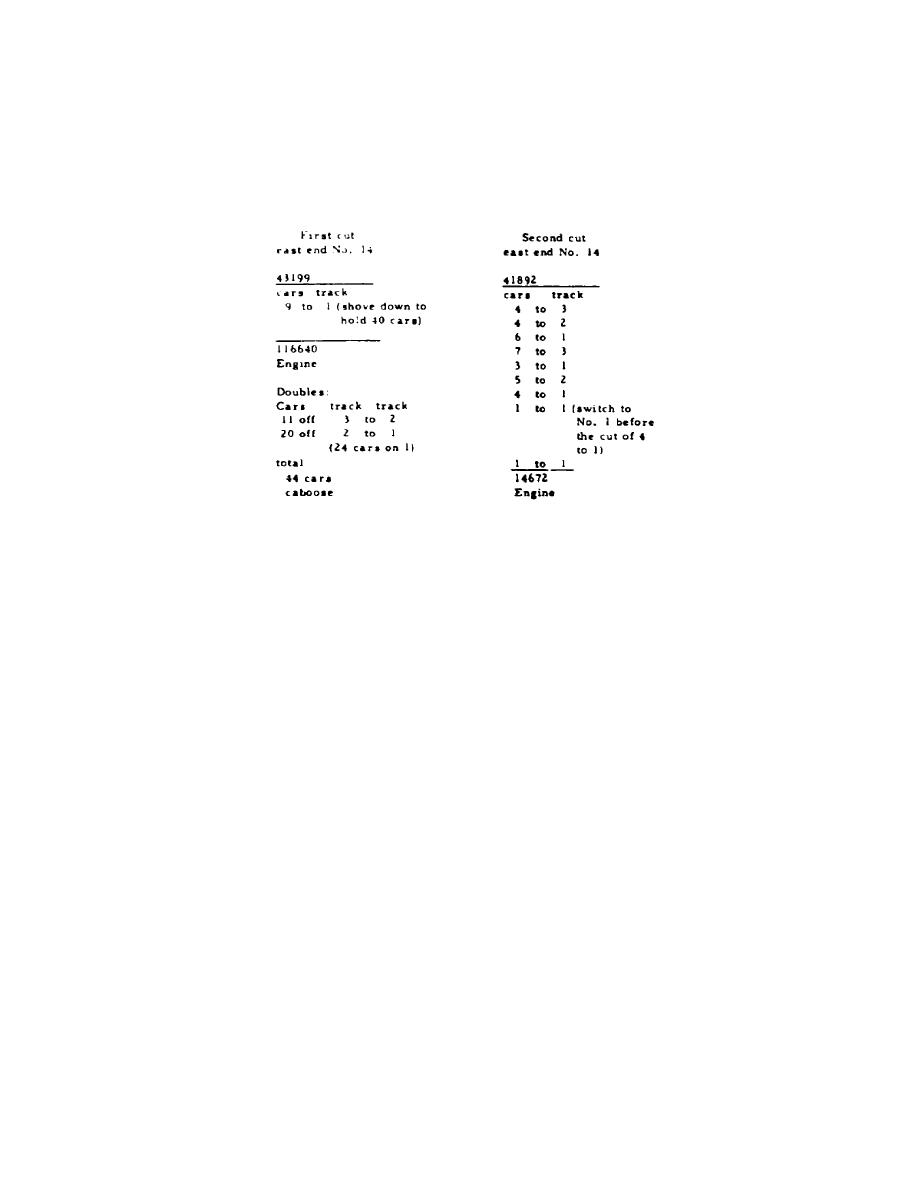
(2) Column II of figure 2.6 shows a slightly different method
of switching the track. While the switching operation is reduced by
only three cuts, the important saving of time is accomplished in
doubling the train together after switching. A switching list of the
method in column II of figure 2.6, showing full instructions to the
conductor, follows.
(3) A comparison of columns I and II of the check of track 14
back in figure 2.6 reveals that the yardmaster has saved cuts and
doubles principally by his marking of the cars 9 through 21, and by
the handling of the 35th car. With the saving of three cuts and five
doubles, an estimated 30 to 40 minutes have been saved. The saving
in time might even be greater if other crews were using the same
switching lead. Moreover, while making the doubles, the crew might
possibly delay other yard crews wanting to use the switching lead.
Since yard operations can cost a third of all rail transportation
expenses, the importance of eliminating delays is apparent.
2.15. SUMMARY
Receiving inbound trains, classifying cars according to
destination or commodity, and making up outbound trains are the main
jobs to be done in a railway yard. When a train is received into the
yard, inspectors go to work inspecting the cars for defects, making a
record of any cars needing repairs. A yard clerk makes a track check
showing the standing of cars in the train, from which a switch list
is made that shows the order in which the train is to be cut or
broken up and switched.
32



 Previous Page
Previous Page
